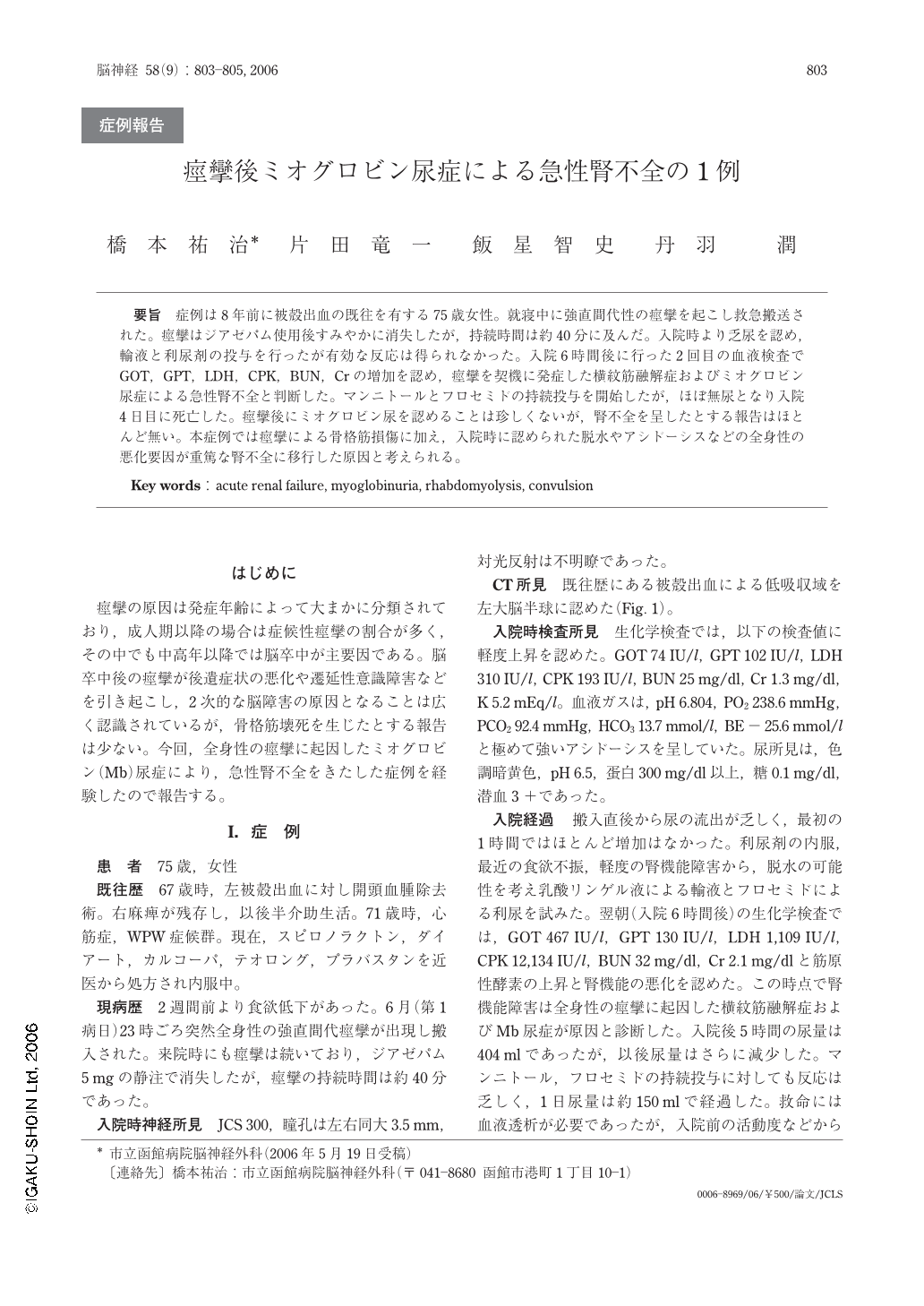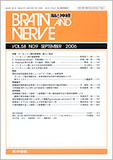Japanese
English
- 有料閲覧
- Abstract 文献概要
- 1ページ目 Look Inside
- 参考文献 Reference
症例は8年前に被殻出血の既往を有する75歳女性。就寝中に強直間代性の痙攣を起こし救急搬送された。痙攣はジアゼパム使用後すみやかに消失したが,持続時間は約40分に及んだ。入院時より乏尿を認め,輸液と利尿剤の投与を行ったが有効な反応は得られなかった。入院6時間後に行った2回目の血液検査でGOT,GPT,LDH,CPK,BUN,Crの増加を認め,痙攣を契機に発症した横紋筋融解症およびミオグロビン尿症による急性腎不全と判断した。マンニトールとフロセミドの持続投与を開始したが,ほぼ無尿となり入院4日目に死亡した。痙攣後にミオグロビン尿を認めることは珍しくないが,腎不全を呈したとする報告はほとんど無い。本症例では痙攣による骨格筋損傷に加え,入院時に認められた脱水やアシドーシスなどの全身性の悪化要因が重篤な腎不全に移行した原因と考えられる。
A 75-year-old female with history of putamenal hemorrhage 8 years earlier was admitted to our hospital with generalized convulsion lasting 40 minutes. Convulsion responded quickly to intravenous administration of diazepam, but deep coma persisted thereafter. Although renal function had normalized before this episode, urinary output was immediately estimated to be limited. Drip-infusion of Ringer's solution and the combined administration of furosemide and mannitol were started. The laboratory values 6 hours after admission demonstrated extremely elevated GOT, GPT, CPK, BUN and Cr levels, suggesting rhabdomyolysis. Urinalysis confirmed myoglobinuria. Despite massive diuretic therapy, renal dysfunction did not improve and she died on hospital day 4. The treatment outcome was probably influenced by her general condition of dehydration and acidosis at admission, as well as muscle damage caused by convulsion. Myoglobinuria can induce life-threatening renal failure, and may be caused by convulsion.

Copyright © 2006, Igaku-Shoin Ltd. All rights reserved.


